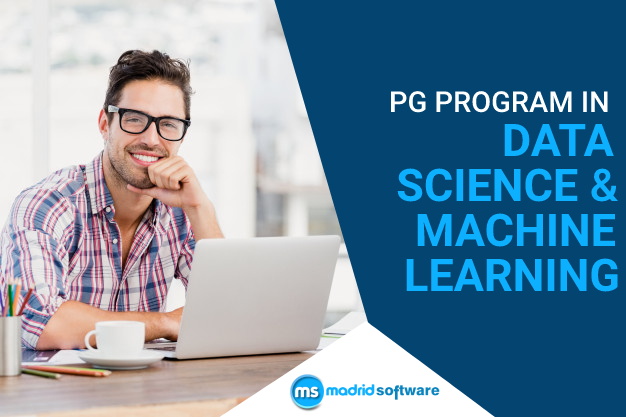What is Data Science?
Data Science is an interdisciplinary field that uses scientific methods, processes, algorithms, and systems to extract insights and knowledge from structured and unstructured data. It combines elements of statistics, computer science, mathematics, and domain expertise to analyze and interpret large datasets, ultimately helping organizations make data-driven decisions.
Data science begins with gathering data from various sources, such as databases, APIs, sensors, and even social media platforms.
Raw data often needs to be cleaned and processed before it can be analyzed. This includes handling missing values, removing duplicates, and transforming data into a usable format.Preprocessing is crucial because messy data can lead to inaccurate results.
data science is a highly multidisciplinary and dynamic field that plays a crucial role in unlocking insights from data. It’s used across industries to solve complex problems and create innovative solutions, making it a vital part of modern business and technology.
- What is Data Science?
- How Do I Prepare for Data Science Interview?
- Things to remember during the interview
- How to be a data scientist in India?
- Data Science Interview Questions for Fresher’s
- Interview Questions on Data Science for Professionals
- Interview Questions on Statistics?
- Interview Questions on Predictive Modeling
- Interview Questions on Machine Learning
- Interview Questions on Data Mining
- Interview Questions on data analytics
- Interview Questions on Python for Data Science
- Top Companies in India Hiring for Data Science
- Job Opportunities in data science
- Salaries in data science
- Conclusion
How Do I Prepare for Data Science Interview?
No matter which company you are applying for or which job profile you are aiming at, the basic requirements for acing the data scientist interview questions remain the same- knowledge about:
- Relational databases and SQL;
- Languages like Python or R and their related libraries
- Machine Learning;
- Deep Learning frameworks
- NLP algorithms
Apart from this basic understanding, the candidate should go through all possible data scientist interview questions and be familiar with the answer pattern. They should be accustomed to several different kinds of data science questions and answers to have an added advantage
Things to remember during the interview
Sitting for an interview for a data scientist position can be a bit intimidating at first. Certain essential things which need to be kept in mind are:
- At first, make sure you listen to the data scientist interview questions correctly. After knowing what exactly the question demands, answer it, giving a proper explanation.
- Always take care of your tone of voice and pacing; it plays a significant role in your selection. Your body language speaks for yourself! So, maintain a good posture and body language.
- Learn from the mistakes from your previous interview. You can always discuss the challenging data scientist interview questions you couldn't answer during the interview with a friend to find a suitable answer.
This will surely give you an added edge in your preparation
How to be a data scientist in India?
The primary requirement for making a career in data science is to possess mathematics and statistics skills. Knowledge in programming languages like R and Python would give you an added advantage in this field.
After finishing your bachelor's degree in a technical background, you can do a certified course on data science to kickstart your career. With sound technical knowledge, you can answer almost all the interview questions for data science.
The demand for candidates from a technical background is preferred since a data scientist's job is gradually becoming more technology-oriented.
If you are a software engineer, i.e., a working professional, and have good data mining skills and analytical skills, a certificate obtained from a data science course can make you eligible for top-notch jobs in this sector.
In case you are a working professional, answering all the interview questions for data science should not pose much threat to you.
With a very fast upsurge in India's corporate sector, data scientists have a high demand with significantly less skilled candidates to fill the market. Hence, with the correct skillset and the understanding of the subject, one can start their data science interview preparation as a data scientist with promising career growth.
Data Science Interview Questions for Freshers
Data scientist interview questions for freshers are in no way easy. The job demands good knowledge and work experience.
To have a good data science interview preparation, here are few of the data scientist interview questions you can go through.
- 1. How to get rid Overfitting and Underfitting?
To get rid of overfitting and underfitting, you can resample the data to estimate the model accuracy (k-fold cross-validation) and have a validation dataset to evaluate the model.
This interview questions for data science tests your ability to solve problems.
- 2. What is the reason behind cleaning playing a vital role in analysis?
When number of data sources increases, the time it takes to clean the data increases exponentially.
When number of data sources increases, the time it takes to clean the data increases exponentially.
A large amount of data is challenging to handle and consumes a lot of time. It might take up to as much as 80% of the time to just clean data. Hence, it is a critical part of the analysis task.
This interview questions for data science tests your theoretical knowledge of the subject.
- 3. What are the main components of the Hadoop Framework?
HDFS and YARN are basically the two primary components of the Hadoop framework. HDFS: Stands for Hadoop Distributed File System. It is the distributed database working on top of Hadoop. It is capable of storing and retrieving the bulk of datasets in no time.
Yarn: Stands for Yet Another Resource Negotiator. It allocates resources dynamically and handles the workloads.
This question has been mentioned in the data science interview questions GitHub.
- 4. What is Collaborative Filtering?
It is the process of filtering used by most recommender systems to find patterns and information by collaborating perspectives, numerous data sources, and several agents.
- 5. What is Survivorship Bias?
It is the logical error. It considers the aspects that support surviving some process and casually overlooking those that did not work because of their lack of prominence.
- 6. What Is the Cost Function?
Also referred to as "loss" or "error," the cost function is a means to calculate the model's performance. It is used to evaluate the level of error of the output layer during backpropagation.
These data scientist interview questions are frequently asked in the data science interview.
- 7. What Are Hyperparameters?
A parameter having its value is set before the learning process begins is termed as a hyperparameter. It points out how a network is trained and the network structure.
- 8. What is the Computational Graph?
Everything in TensorFlow revolves around the creation of a computational graph. It has a network of operational nodes which represent mathematical operations.
This interview questions for data science tests your basic knowledge about the course of the subject.
- 9. How are missing values and impossible values represented in R?
One of the central problems when working with real data is handling missing values. NA represents these in R. Impossible values (division by 0, for example) are represented by NAN (not a number).
Few other questions are:
- 10. How do you create a table in R?
Out of the many options available, using the various available packages meant for making tables is the easiest way.
The packages that one can use are:
- gt
- kableExtra
- formattable
- DT
- Reactable
- flextable
- huxtable
This question has been mentioned in the data science interview questions GitHub.
- 11. What does the NULL data value indicate?
The NULL data value indicates that the specific variable has no value attached to it in the database.
- 12. What is a primary key and a foreign key?
A primary is the candidate key that distinctly identifies a record in a relation.
The Primary key attribute contains unique values without the NULL values.
A foreign key in a table refers to the primary key of another table.
The foreign key attribute contains the null value. The Foreign key attribute does contain duplicate values.
- 13. What do you understand by the curse of dimensionality?
A phenomenon occurs when classifying, organizing, and analyzing high-dimensional data that does not occur in low-dimensional spaces.
A dataset containing a huge number of attributes of the order of a hundred or more is referred to as high dimensional data.
Interview Questions on Data Science for Professionals
Data science interview questions can be tricky to solve. They are used as a tool to test your level of knowledge and your analytical skills.
To have an added advantage over the other candidates, you should do your data science interview preparation by going through all possible data science interview questions to get the hang of the process.
Below are a few data science questions and answers.

- 14. In learning Data Science, why is TensorFlow considered a high priority?
TensorFlow is considered necessary in learning Data Science since it supports using familiar and easy-to-learn computer languages, namely C++ and Python. This makes various processes under data science achieve faster compilation and completion within the stipulated time frame and quicker than the conventional Keras and Torch libraries. TensorFlow supports computing devices, including the CPU and GPU, for more direct inputs, editing, and data analysis.
This interview questions for data science tests your understanding of the underlying concepts.
- 15. What is the true positive rate and false-positive rate?
In Machine Learning, true positives rates measure the percentage of actual positives that are correctly identified.
The false-positive rate is the ratio between negative events wrongly categorized as positive (false positive) and the total number of actual events.
These data scientist interview questions are asked to test your knowledge in the data science interview.
- 16. What do you understand by dimensionality reduction?
A data set containing a higher number of dimensions are converted into a data set with fewer dimensions in this process.
It is achieved by dropping some fields from the dataset in an organized way without affecting the data set's amount of information.
This question has been mentioned in the data science interview questions GitHub
- 17. What do you know about k-fold cross-validation?
We divide the entire dataset into k equal parts in k-fold cross-validation. All the k parts of the dataset are used for training and testing purposes.
We iterate over the entire dataset k times. In each iteration of the loop, we e use one of the k parts for testing and the other k − 1 part for training.
This is one of the most important data science interview questions for freshers.
Few other data science interview questions are:
- 18. What is an RNN (recurrent neural network)?
A recurrent neural network (RNN) is a type of artificial neural network commonly used in speech recognition and natural language processing (NLP). RNNs are designed to identify a data's sequential characteristics and use models to predict the likely scenario.
- 19. How is Data modeling different from Database design?
| Data modeling | Database design |
| It is the first step towards the design of a database. | This is the entire process of designing the database. |
| The process includes moving from the conceptual stage to the logical model to the physical schema. It involves the systematic method of applying data modeling techniques. | Database design includes the detailed logical model of a database, but it can also include physical design choices and storage parameters. |
- 20. What do you mean by the F1 score, and how do you calculate it?
F1 score is the harmonic mean between precision and recall. It is a statistical measure to rate an individual’s performance.
The formula for the F1 score is:
F1 = 2 * (precision * recall) / (precision + recall)
- 21. Highlight the points of difference between an error and a residual?
| Error | Residual |
| Error is a theoretical concept that can never be observed. | Residual is a real value that is calculated for each time a regression is done. |
| Error of the data set is the differences between the observed values and the true / unobserved values. | Residual is calculated after running the regression model and is the differences between the observed values and the estimated values. |
- 22. What is RMSE?
Root Mean Square Error (RMSE) is the standard deviation of the residuals. It is an indication of how concentrated the data is around the line of best fit.
- 23. Explain stacking in Data Science.
Stacking is a method of organizing multiple classifications or regression models.
Data stacking is splitting a data set up into smaller data files and stacking each of the variables' values into a single column. It is used when preparing data for further analysis.
- 24. Name the different kernel functions that one can use in SVM.
The different kernel functions are:
- Linear Kernel
- Polynomial Kernel
- Gaussian Radial Basis Function (RBF)
- Sigmoid Kernel
- Gaussian Kernel
- Bessel function kernel
- ANOVA kernel
- 25. What is A/B testing?
A/B testing is a basic randomized control experiment. It is a way to compare the two versions of a variable to determine the two versions' scale of performance.
It is a testing methodology that uses hypothetical scenarios for making decisions that determine population parameters based on sample statistics.
This question has been mentioned in the data science interview questions GitHub.

- 26. Explain TF/IDF vectorization.
TF-IDF is the short form for Term Frequency Inverse Document Frequency. It is a widespread algorithm to convert the text into an exact representation of numbers used to fit machine algorithms for prediction.
- 27. What are some of the assumptions required for linear regression?
The assumptions are:
1. The relationship between the independent variable and the dependent variable is linear.
2. The residuals are independent. In particular, no correlation exists between consecutive residuals in time series data.
3. The residuals have constant variance at every level of x.
4. The residuals of the model are distributed normally.
Although it is a commonly asked data science interview questions for freshers, many candidates are unable to answer this due to lack of conceptual understanding.
Interview Questions on Statistics
Statistics is a highly analytical subject and demands an in-depth understanding of the subject to answer the data scientist interview questions that are frequently asked in the data science interview.
Here are few of the data scientist interview questions along with a data science interview questions and answers guide.
- 28. Where can you use long-tailed distributions?
A long-tailed distribution is where the tail drops off gradually toward the curve's end.
You can use the long-tailed distributions in the Pareto principle and the product sales distribution. It is also used in classification and regression problems.
- 29. Mention an example where the median is a better measure when compared to the mean.
If many outliers can positively or negatively skew data, the median is preferred as it provides an accurate measure in this case of determination.
An outlier is an abnormal value. It is at an eccentric distance from the rest of the data points.
This interview questions for data science tests your basic analytical skills.
- 30. What is the difference between inferential statistics and descriptive statistics?
| Descriptive statistics | Inferential statistics |
| provides exact and accurate information | provides information of a sample, and we need inferential statistics to conclude the population |
- 31. Why we need sample statistics?
Population parameters are usually unknown; hence we need sample statistics.
This question holds a major place as an essential data science interview questions for freshers.
- 32. Mention the relationship between standard error and margin of error?
The margin of error also increases if the standard error increases.
Although, it is among the data scientist interview questions that are frequently asked in the data science interview, candidates tend to answer this question wrong.
This question has been mentioned in the data science interview questions GitHub.
- 33. What is the Bernoulli distribution?
A Bernoulli distribution has only two outcomes namely 1 (success) and 0 (failure), and a single trial.
- 34. How many Types of Hypothesis Testing are there?
There are two types of Hypothesis Testing:
- 1. Null Hypothesis
- 2. Alternative Hypothesis
Few more data science interview questions are:
- 35. What do you understand by Z-test?
Z- tests are a statistical way of testing a hypothesis when either the population variance is known or the population variance is unknown, but the sample size is large n ≥ 30.
- 36. When to use t distribution and when to use z distribution?
Z-distribution distributions are used when the population standard deviation is known.
On the contrary, if the population standard deviation is estimated using the sample standard deviation, use the t-distribution.
- 37. What do you know by six sigma in statistics?
Six Sigma improves business by reducing the possibility of error. It is a set of management tools and techniques created especially for this purpose.
It is a data-driven procedure that uses a statistical methodology for reducing defects.
- 38. What is the purpose of KPI in statistics?
KPI is the acronym for Key performance indicator. It is used for measuring a company's success versus a set of targets, objectives, or industry peers.
In simple words, they are used to determine how well company goals are being met.
This interview questions for data science tests your knowledge of the subject.
- 39. What is the Pareto principle?
The Pareto principle is a law that says that 80 percent of the output obtained from a given situation or system is defined by 20 percent of the input.
It is also called the 80/20 rule.
- 40. What is kurtosis?
It is a process that is used to describe the distribution of the data set. It depicts to what extent the data set points of a particular distribution deviate from normal distribution data.
It is used to determine whether a distribution contains extreme values.
- 41. What is Bessel's correction?
It indicates the “N-1” found in formulas, like the sample variance and sample standard deviation formulas.
This data science interview questions for freshers can be used for testing the candidate’s basic knowledge.
- 42. What is the goal of DF in statistics?
Degrees of freedom define the probability distributions for the test statistics of various hypothesis tests.
They indicate the number of independent values that can vary in an analysis without breaking any constraints.
- 43. How would you execute the A/B test for many variants?
You can use the Bonferroni correction to test for many variants without much trouble.
Interview Questions on Predictive Modeling
Data Modelling is the diagrammatic representation of the relation between the entities. It is the first step towards database design.
Given below are a few top data science interview questions and answers.
- 44. Difference Between Linear and Logistic Regression?
| Linear Regression | Logistic Regression |
| Linear regression needs the dependent variable to be continuous, i.e., numeric values (no categories or groups). | Binary logistic regression needs the dependent variable to be binary - two types only (0/1). Multinomial or ordinary logistic regression can have a dependent variable with more than two categories. |
| Linear regression works on least square estimation. | Logistic regression follows Maximum Likelihood Estimation. |
- 45. What is regularization? Give an example of using regularization in a model?
It is a process that helps reduce variance in the model, meaning avoiding overfitting.
An example of regularization is the usage of L1 regularization in Lasso regression to penalize significant coefficients.
- 46. Mention the different design schemas in Data Modelling?
There are two kinds of schemas in data modeling
- 1. Star Schema
- 2. Snowflake Schema
- 47. Distinguish between OLTP and OLAP?
| OLTP | OLAP |
| OLTP is the acronym for the Online Transaction Processing System | OLAP stands for the Online Analytical Processing System. |
| OLTP is used for maintaining the transactional data of the business & is usually highly normalized | OLAP is used for analysis and reporting purposes & it is usually in the de-normalized form. |
| In case your system is OLTP, you should go with the star schema design, | If your system is OLAP, you should pefer the snowflake schema. |
This data science interview questions and answers guide contains appropriate questions which the candidate should practice.
- 48. What is a Surrogate key?
A surrogate key is an uncommon identifier or a system-generated sequence number key that can act as a primary key.
It is advised to read these data scientist interview questions to have a good hold over the data science interview.
This question has been mentioned in the data science interview questions GitHub.
- 49. What do you mean by SAP security?
SAP security is furnishing timely access to business clients for their power or duty and giving authorization as indicated by their parts.
This question has been mentioned in the data science interview questions GitHub.
Some other data scientist interview questions are:
- 50. How do you know that your data points follow a particular distribution??
Probability plots are the best method to determine whether the data points follow the particular distribution.
- 51. It is preferable to include fewer predictors over many. What are your views?
Many predictors may lead to the rise of overfitting. Hence, it is advised to use lesser predictors.
Interview Questions on Machine Learning
Machine learning is the most important aspect of data science and should be dealt with extra care during your data science interview preparation.
Here are few data science questions and answers that will help you with your data science interview preparation.
- 52. What are the differences between inductive learning and deductive learning?
| Inductive learning | Deductive learning |
| The model learns by studying examples from a set of observed instances to draw a generalized conclusion. | The model first applies the conclusion, and then the conclusion is drawn. |
- 53. Mention the differences between Data Mining and Machine Learning?
| Machine learning | Data mining |
| The study, design, and development of the algorithms provide the processors' ability to learn without being explicitly programmed. | In Data mining, structured data abstracts knowledge or unknown patterns. In this process, machine learning algorithms are employed. |
- 54. What do you understand by the term ILP?
ILP is the acronym for Inductive Logic Programming. It implements logic programming and is a part of machine learning.
It aims at searching patterns in data that the analysts can employ to construct predictive models and give valuable insights.
This question has been mentioned in the data science interview questions GitHub.
- 55. What is SVM in machine learning?
SVM stands for Support Vector Machine. They have supervised learning models with an associated learning algorithm that analyzes the data used for classification and regression analysis.
Some other data scientist interview questions are:
- 56. Differentiate between correlation and regression?
| Correlation | Regression |
| Correlation establishes the association or the absence of the relationship between two variables, ‘x's and ‘y’. | Regression predicts the dependent variable's value after studying the value of the known independent variable |
| It is used to represent the linear relationship between two variables. | It is used to fit the best line and estimate one variable based on another variable. |
- 57. What is a standard error?
In statistics, a specimen means deviates from the actual mean of a population; this deviation is called the standard error of the mean. Therefore, the standard error is the approximate standard deviation of a statistical sample population.
- 58. What is OLS?
Ordinary least squares or OLS is a very standard method to analyze and scrutinize chunks of data.
- 59. Highlight the relation between the terms TSS, ESS, and RSS.
The relation is as follows:
TSS=ESS+RSS
This question has been mentioned in the data science interview questions GitHub.
- 60. What is MLE?
MLE or Maximum Likelihood Estimation is a method for estimating parameters.
- 61. What is the difference between exploratory and confirmatory & explanatory analysis?
Exploratory factor analysis is a process used for finding latent variables in data, usually data sets with many variables.
Confirmatory factor analysis is employed for confirming that specific structures in the data are accurate; frequently, there is a hypothesized model due to theory, and you want to prove it.
This interview questions for data science tests your basic understanding of the subject.
- 62. Elaborate the differences between random forest and gradient boosting algorithm.
| Random forest algorithm | Gradient boosting algorithm |
| Random forest uses a decision tree. | Gradient boosting uses regression trees. |
| Random forests algorithm overfits a sample of the training data and then reduces the overfit by simply averaging the predictors | It repeatedly trains trees or the residuals of the previous predictors. |
| The random forest is easy to parallelize. | It is difficult to parallelize. |
- 63. What is meant by 'Training set' and 'Test Set'?
A 'Training set' is implemented in a dataset to build up a model, while a 'Test (or validation) set' is to validate the model built.
Interview Questions on Data Mining
Data mining is an important concept in terms of the data scientist interview questions that are asked in the data science interview.
To help with your data science interview preparation, here are few data scientist interview questions that are asked in the data science interview.
- 64. Mention the difference between Data Mining and Data warehousing?
| Data Mining | Data warehousing |
| The objective of data mining is to examine or explore the data using | It is extracting data from different sources, cleaning the data, and storing it |
| queries. | in the warehouse |
| While using Data mining, one can use this data to bring about different reports like profits generated, etc. | The data warehouse of a company stores all the relevant information of projects and employees. |
- 65. What is MODEL?
Models help the different algorithms in decision making or pattern matching. Data mining involves studying various models and choosing the best one based on their predictive performance.
This data science interview questions and answers guide contains all the top data science interview questions and answers.
Few commonly asked data scientist interview questions are:
- 66. What is the Naive Bayes Algorithm?
The Naive Bayes Algorithm classifies the data based upon the conditional probability values computation. It makes use of the Bayes theorem for the calculation.
- 67. What is the clustering algorithm?
The clustering algorithm involves the grouping of several unsorted data points. We can employ a clustering algorithm to classify each data point into a specific group on a given set of data points.
- 68. Explain how to mine an OLAP cube.
It is a multidimensional array of data that is obtained from various and unrelated sources.
- 69. What is DMX?
Data Mining Extensions (DMX) is supported by Microsoft's SQL Server Analysis Services product. It is a query language for data mining models
- 70. What are CUBES?
Cubes logically represent Multidimensional data in data warehousing.
This question has been mentioned in the data science interview questions GitHub.
Interview Questions on data analytics
These are few of the data scientist interview questions which you should definitely go through to ace the data science interview.
These hand-picked data scientist interview questions will surely help you with your data science interview preparation.
- 71. How are Data Mining and Data Profiling different from each other?
| Data Mining | Data Profiling |
| It refers to data analysis concerning finding relations that have not been discovered earlier. | It is the process of analyzing individual attributes of data. |
| The main area of focus is detection of unusual records, dependencies, and cluster analysis. | The main area of focus is providing valuable information on data attributes such as data type, frequency, etc. |
- 72. What do you know about the KNN imputation method?
It is a method which is used to impute the missing attribute values imputed by the attribute values most similar to the attribute whose values are missing. The similarity of the two characteristics is determined by using the distance functions.
- 73. Is it possible to generate a Pivot Table from multiple tables?
Yes, we can get one Pivot Table from multiple different tables when there is a connection between them.
This interview questions for data science tests your analytical skills.
- 74. Why is the ANYDIGIT function used in SAS?
The function is used for searching a character string. After the string is found, it will simply return the desired string.
- 75. What is the default port for SQL?
The default TCP port assigned by the official Internet Number Authority (IANA) for the SQL server is 1433.
Some other data scientist interview questions are:
- 76. What is Map Reduce?
MapReduce is a programming pattern within the Hadoop framework used to access big data stored in the HDFS.
The MapReduce algorithm consists of two steps-
- Map
- Reduce
- 77. What is an N-gram?
It is a connected string of N items. The N-Gram could consist of large blocks of words or smaller sets of syllables.
Interview Questions on Python for Data Science
To answer python data science interview questions correctly and with the proper explanation, the candidate needs to have thorough, in-depth knowledge about Python.
It is the most used language in data science interview questions and needs to be mastered during your data science interview preparation.
This data science interview questions and answers guide provided here consists of top data science interview questions and answers.
Here are the most frequently asked python data science interview questions.
- 78. Elaborate the difference between a list and a tuple.
Note: This question tests the basic knowledge of the candidate
| LIST | TUPLE |
| A list is mutable. | A tuple is immutable. |
| A list is created with square brackets. | A tuple is made with first brackets. |
| The execution of lists is slower. | The execution of tuples is faster. |
| Example of a list: shopping= [ bread, butter, egg] | Example of a tuple: shopping= (bread, butter, egg) |
- 79. What is a list comprehension? Explain with an example.
List comprehensions give a compact and concise way to create lists.
A list is initialized using square brackets.
However, list comprehension provides an expression followed by a for clause and then if clauses when necessary, within the square brackets.
The output of the evaluation of the given expression gives the contents of the new list.
One can understand this with the help of the following example:
list= [1,2,3,4,5,6,7,8]
new_list=[x+1 for x in list if x%2==0]
print(new_list)
#new_list= [3, 5, 7, 9]
These data science questions and answers will help you with your practice.
- 80. What is PEP8?
PEP8 is the guidelines present which one can follow while writing their code. It can be referred to by some other programmer later to understand the previously written code.
In simple words, it is used to enhance code readability.
- 81. What will be the output of the below code?
word = ‘abgddgwuohsv45632'
print (word [:3] + word [3:])
The output screen will show
abgddgwuohsv45632
Since the indices collide and a "+" sign is used, string concatenation occurs, and we get the original string as the output.
Some other samples of python data science interview questions are:
- 82. Can the lambda forms in Python contain return statements?
No, the lambda forms in Python do not contain return statements.
- 83. Can you use remove, del, and pop synonymously?
Although all of the functions are used to delete elements, their operation area is not the same.
To remove an item by value, remove () is used.
To remove items by index or slice del is employed.
To remove an item by index and get its value, the pop () function is used.
- 84. What is monkey patching in Python?
The process of making changes to a module or class during the runtime is called monkey patching.
- 85. Explain the use of the negative index in Python.
Suppose an array/list is of size n, then for negative index, -n is the first index, -(n-1) second, last negative index will be – 1.
- 86. Elaborate dictionary comprehension in the context of Python.
Comprehensions in Python provide us with a quick and concise way to construct new sequences using sequences already defined.
We can create a dictionary using dictionary comprehensions.
The syntax is:
output_dict = {key:value for (key, value) in iterable if (key, value satisfy this condition)}
- 87. How will you pass arguments in Python- by value or by reference?
All arguments are passed by reference in the Python language. It is also referred to as call by object.
Here are few other python data science interview questions with answers.
- 88. Why are decorators used?
Decorators are used to wrapping a piece of code that the compiler can execute either after or before the original code's execution.
It can be applied as a means of modifying or injecting code in functions or classes also.
- 89. What are some popularly used Python data analysis libraries?
The examples of the most commonly used Python data analysis libraries are:
- NumPy
- Pandas
- Matplotlib
- Seaborn
- Sci
- Kit
- 90. Differentiate between append and extend.
| Append | Extend |
| In the operation of a list, append is used to add a value at the end of a list. | In the operation of a list, extend is used to add a value at the end of a list. The values added are present in some other list |
| For example: a = [1,2,3,4,5,6] b = [9,8,7] a.append(98) print (a) The output will be [1,2,3,4,5,6,98] |
For example: a = [1,2,3,4,5,6] b = [9,2,7] a.extend(b) print (a) The output will be [1,2,3,4,5,6,9,2,7] |
- 91. Is Python a case sensitive language?
Yes, Python is a case sensitive language. It is also dependent on the indentation used in the entire code.
The output is different for different indentations used. Hence, while writing the code, the indentation should be kept in mind.
- 92. Is a Python array and list interchangeable?
A Python array is different from a list, although both store data in a similar pattern.
| Array | List |
| An array can store data of a single data type. | A list is more diverse. It can store data of different data types in a single list. |
- 93. What is a lambda function in Python?
A lambda function is a random function that can have any number of parameters but can have just one statement. It is a compact way of declaring a function.
For example:
a = lambda x,y,z : (x**y) +(z**x)
print (a (2,3,4))
The output of the following code is:
24
- 94. How do we swap the values of two lists?
list_1 = [1, 2, 3]
list_2 = [3, 2, 1]
list_2, list_1= list_1, list_2
- 95. How do you get rid of whitespace from a string?
To remove whitespaces, one can use the strip([str]) function. It is an in-built function.
- 96. How do you remove the leading whitespaces from a string?
One can use the lstrip() function for this purpose.
- 97. Does Python require compilation before execution?
Python is an interpreted language. This means that it does not require compilation before execution.
- 98. What will be the output of the code?
A= [12,3,4,5,6,7,8,9]?
print (A [10])
There will be an IndexOutOfBound error.
- 99. What would be the output of the code?
A= [12,13,54,5,76,7,8,9]
print (A [-2])
The output will be:
8
- 100. Which function will you use to convert a number to a string?
You can use the str () function to convert a number into a string.
If you want an octal representation, then you can use the oct () function.
In case you want a hexadecimal representation, then use the hex () function.

To prepare for python data science interview questions, the candidate should first know the language and be familiar with coding in the language. It is a "friendly" programming language that operates nicely with everyone and runs on everything.
However, python data science interview questions cannot be cracked only by coding. The candidate needs to have more knowledge.
They should have the ability to analyze the question and break it into smaller parts to analyze with greater preciseness.
Writing codes will surely enhance this quality. They should be able to develop multiple ways to solve a single problem.
Python is an essential language for Data Science. Primarily Python is used for data analysis when you need to integrate the results of data analysis into web apps or if you need to add mathematical/statistical codes for production.
Hence it is advised to prepare python data science interview questions with a proper understanding of the subject.
Top Companies in India Hiring for Data Science
Data science is a very fast-growing industry in India. It has the potential to cover the maximum percentage of the job market in the next few years.
Some of the top companies hiring for data science are as follows:
- Amazon
- Oracle
- Wipro
- JP Morgan
- Mu Sigma
- Accenture
- Manthan
- Absolutdata
- Fractal Analytics
- Latent View
Job Opportunities in data science
In recent times, data science has earned a place for itself in the job market. The deficit of skilled people in this field increasingly turning to data for decision-making has also led to the vast demand for Data Scientists in start-ups and well-established companies.
While most of us think of 'data scientist' as a particular job, data science career opportunities are plenty and varied. Depending on the organization, department, vertical, domain, seniority level, etc., you can be performing your data science interview preparation for completely different roles.
A few of the job profiles which you can apply for are:
- Data Scientist
- Data Analyst
- Data Engineer
- Business Intelligence Analyst
- Data Architect
- Data Administrator
- Business Analyst
- Data/Analytics Manager
Salaries in data science
Data science jobs are comparatively new in the market. The demand is very high, with a significantly less skilled workforce to fill the vacancies.
Therefore, the requirement for professionals in data science is increasing eventually with time.
The salary in this field is higher as compared to its other similar counterparts. Thenational average salary is INR 6 lakhs per annum.
The salary differs for the different sectors under the umbrella of a data science job.
SAS users are having a salary range between INR 9.1-10.8 lakhs per annum.
Salary for machine learning starts from around INR 3.5 lakhs per annum.
If you have steady growth in this field, the salary can leap up to INR 16 lakhs per annum.
A 26% rise in your salary is expected if you know big data and data science simultaneously compared to being skilled in only one area.
With an increased amount of work experience, say 15 years, one can expect a salary of INR 17 lakhs per annum
Hence jobs in the data science sector are pretty lucrative.
Conclusion
There is no single "best" way to prepare for a data science interview. Hopefully, by reviewing these common data scientist interview questions for data scientists, you will be able to walk into your interviews with the best data science interview preparation.
To successfully get a job in this sector, the person should be able to handle top data science interview questions and answers. To be able to do this, they should have proper understanding of the subject.
.png)




.png)




.png)


 (4).png) Call Now
Call Now